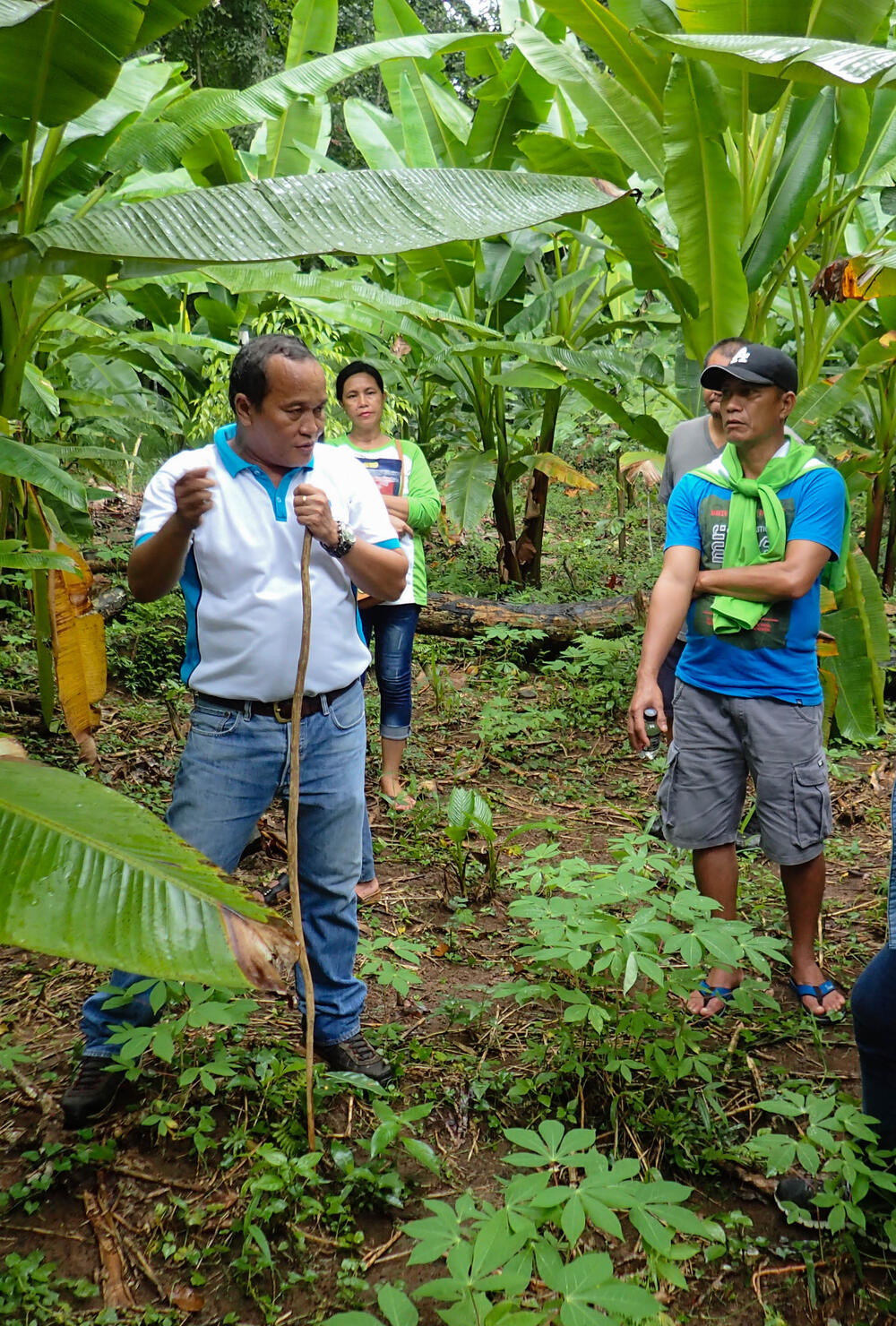You are here
Nature-based Solutions

Dr. Marlito Bande describing a strategy of interplanting abaca, a plant that yields extremely strong fiber, with native dipterocarp trees during a training on Rainforestation in the Philippines
© David Neidel
Nature-based solutions (NbS) consist of a suite of sustainable land management approaches including conservation, ecosystem-based adaptation, and ecological restoration, which aim to reduce greenhouse gas emissions and help people adapt to climate change (Cohen-Sacham et al. 2018). Restoring mangroves, for example, contrasts with traditional infrastructure or engineering-based approaches to ecosystem management, such as the use of concrete or steel structures for coastal protection (Browder et al. 2019).
The growing interest in NbS has inspired new projects, research, and initiatives designed to address the many challenges associated with climate change. The following manuals, guides, and articles showcase some of the foundational literature on NbS, describing the motivation, techniques, and key principles behind implementing this approach.
Published by the World Bank and the World Resources Institute, the report by Browder et al. (2019) emphasizes that integrating nature into mainstream infrastructure projects can result in lower costs and more resilient services. Promoting this kind of green infrastructure can also produce other kinds of benefits like contributing to a clean reliable water supply and protecting against floods and drought.
Cohen-Shacham et al. (2018) present eight core principles for implementing NbS on the ground. Key among these principles are a) applying NbS at a landscape scale; b) designing NbS processes, guidelines and initiatives to address societal challenges; and c) flexibility in implementing NbS within communities either as a standalone project or integrated with other solutions.
The International Union for Conservation of Nature released the Global Standard for Nature-based Solutions (2020) to serve as a framework for the verification, design, and scaling up of NbS. The manual lists eight criteria and 28 indicators for evaluating if projects and initiatives meet the full potential of NbS. For a project to be identified as a NbS, for example, it should have inclusive, transparent and empowering governing processes, such as the provision of feedback and grievance resolution mechanisms, and Free, Prior and Informed Consent (FPIC) for Indigenous Peoples (IUCN 2020).
Nature based Transformative Adaptation (Fedele et al. 2019) provides project managers and policy makers with a practical handbook to identify, design, and implement NbS programs and projects that support ‘transformative adaptation’ by which strategies are designed to fundamentally realign the interactions of people and nature in a way that addresses the root causes of vulnerability to climate-induced hazards. This framework is intended to help stakeholders strengthen the capacity of both people and nature to adapt to climate change impacts in the long term.
With the excitement around Nature-based Solutions building, it is especially important to consider the ethical and practical risks that might be associated with implementing these type of green infrastructure projects. Several key considerations are outlined in a paper by Seddon et al. (2020). While NbS are seen as an exciting way to sequester carbon from the atmosphere, they should not distract from the critical need to simultaneously reduce the carbon footprint of the global economy. Additionally, when providing economic incentives, NbS must avoid inadvertently investing in projects that could have a detrimental impact on biodiversity or encourage land grabs from local and indigenous peoples.
Featured articles:
Fedele G., Donatti C.I., Corwin E., Pangilinan M.J., Roberts K., Lewins M., Andrade A., Olvera D., Frazee S., Grover M., Lalaina Rakotobe Z., Rambeloson A. (2019), Nature-based Transformative Adaptation: a practical handbook, Conservation International, Arlington, VA, USA. 56p.
Seddon N., Chausson, A., Berry, P., Girardin, C.A.J., Smith, A., Turner, B. (2020). “Understanding the value and limits of nature-based solutions to climate change and other global challenges.” Philosophical Transactions of the Royal Society B 375(1794): 1-12.

